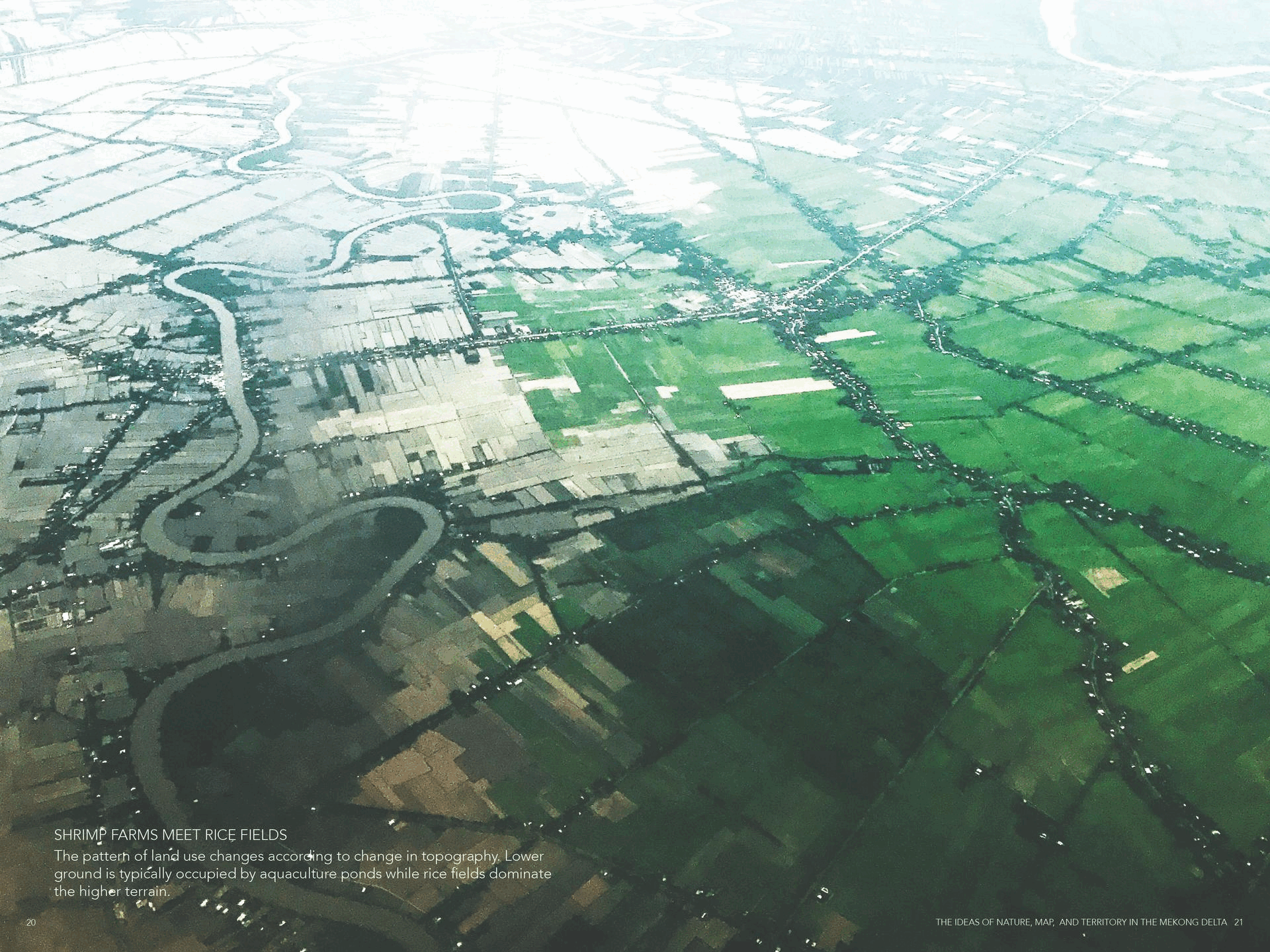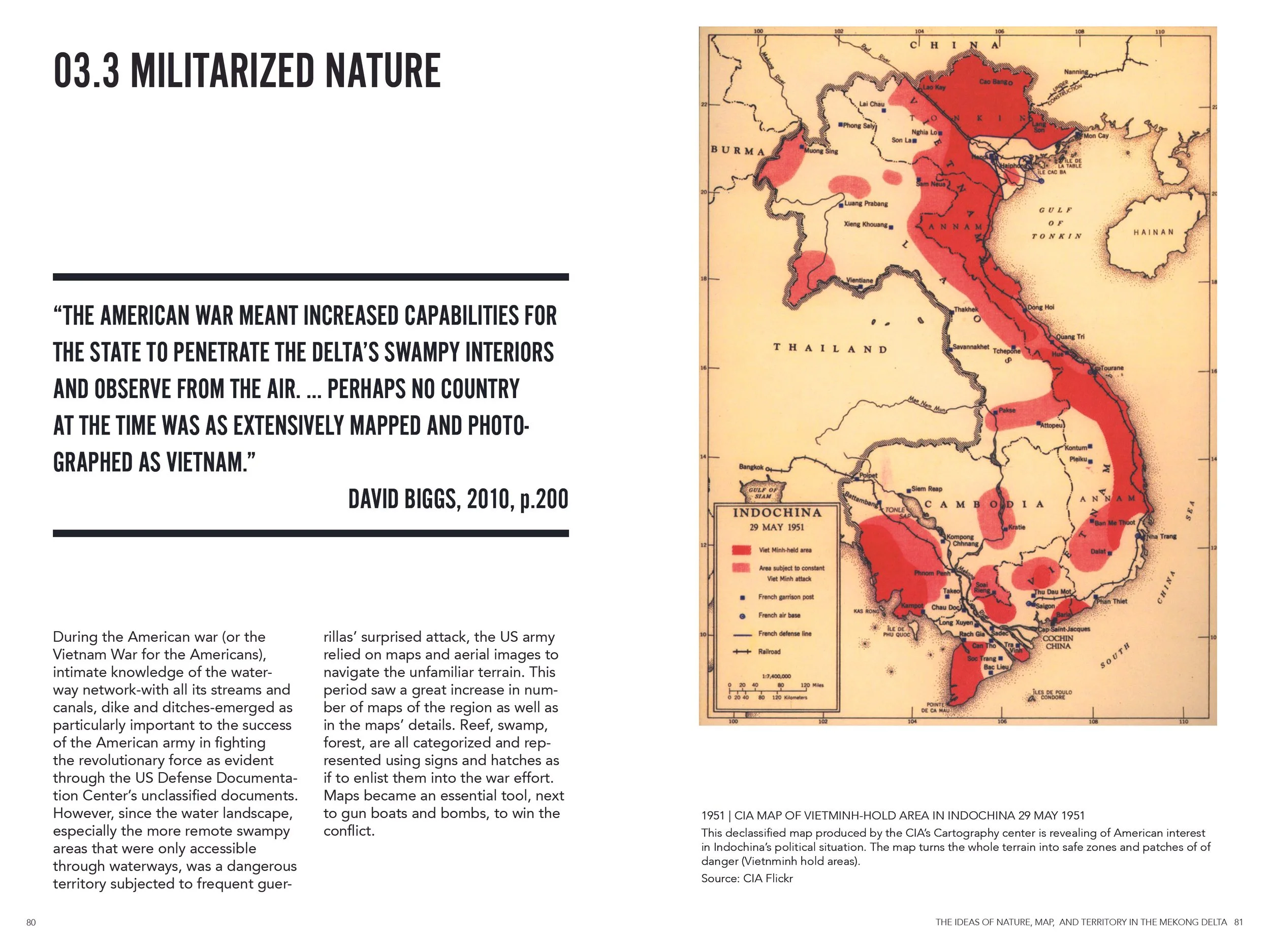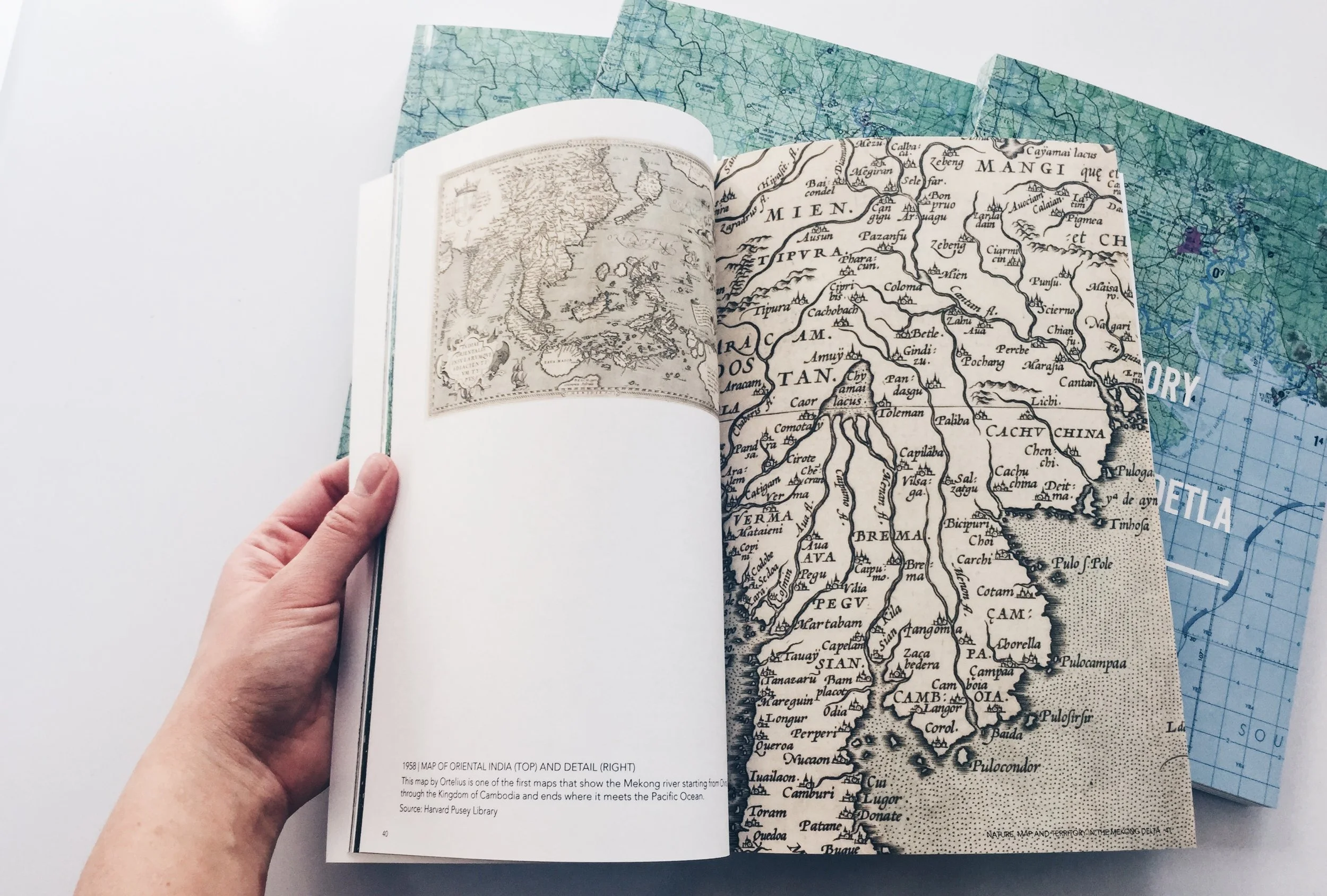
MAPS IN THE MAKING OF THE MEKONG DELTA
“Henceforth, it is nevertheless the map that precedes the territory.”
Jean Baudrillard
Research | Mekong Delta, Vietnam
The history of the Mekong Delta is a history of shifting power relations. The delta has not only witnessed the rise and fall of no less than five political regimes since the beginning of its recorded history but it has also played a critical role in these upheavals. In the past three hundred years, various competing powers have transformed the river and its delta through ambitious hydraulic engineering projects as part of their nation-building campaigns.
My research traces this history of intensive landscape transformation and explores how maps—an enduring cultural artifact—instigated this process, and consequently, restructured the region’s social landscape. While much has been written about the interconnection between ecological changes and social evolutions in Southeast Asia as well as the continuous remaking of the Mekong Delta landscape, few studies have focused on the role of representation, specifically cartographic products, within this process. Through the lens of critical cartography, this reseach, first, places mapping practices and its critical study within the sphere of ecomedia critique, and, second, analyzes and deconstructs historical maps and documents that I gathered from various archives and libraries in the United States, Vietnam, and France to identify four narratives about the delta’s natures that were constructed by maps in conjunction with other representational modes. I argue that these map-driven narratives facilitate, justify, and constitute the pretexts for the continuous reshaping of the territory.
The rearch was done with the help of the Havard GSD Penny White Research Grant (2017) and advised by Pierre Belange, Robert Pietrusko, and David Biggs. Additional thoughts and concepts were developed in The Idea of Enviroment course by Dilip da Cunha.
Edited copy was published in “Environment, Media, Popular Culture, and Southeast Asia”, edited by Jason Paolo Telles et al, Springer Nature 2022.


















